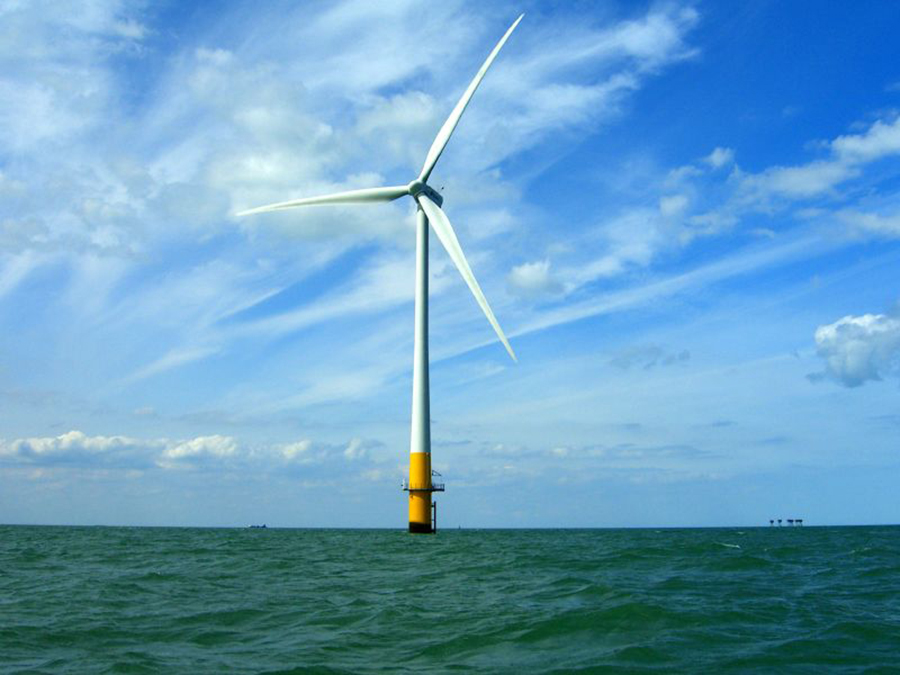
By Representative Dave M. Rogers
While policy makers are confronted by a wide variety of pressing policy issues, few if any compare to the complexity and scale presented by our changing climate. Most of us are long since familiar with the worrisome data, but two recent comprehensive reports thoroughly define the challenge.
The most recent National Climate Assessment, a quadrennial publication of the US Global Change Research Program, and the October 2018 report of the UN’s Intergovernmental Panel on Climate Change (IPCC) presents a wide array of troubling findings. The IPCC report concluded that limiting global temperature rise to 1.5°C (2.7°F) to prevent drastic impacts on global ecosystems was possible, but would require dramatic action to reduce emissions to net- zero emissions by 2050.
Confronted by this daunting landscape, the Massachusetts state legislature has passed An Act Creating a Next-Generation Roadmap for Massachusetts Climate Policy (the Roadmap). The new law puts the Commonwealth on a path to net-zero greenhouse gas (GHG) emissions by 2050 (the IPCC report standard) and specifies enforceable targets at five-year intervals.
While the actions of one state will never be adequate, and Massachusetts still needs to do more, the new law truly is a landmark breakthrough. Many of you wrote, called, submitted testimony, or just generally let it be known to me that addressing climate change is highly important to you. I appreciate and applaud your activism which helped drive this effort.
Past Legislation on Climate and Energy
The legislature has taken several actions over the years to address climate and energy policy. In 2016, we passed An Act to Promote Energy Diversity which, among other policy innovations, addressed gas leaks and authorized 1,600 megawatts (Mw) of offshore wind.
In 2018, we passed An Act to Advance Clean Energy to change our state’s Renewable Energy Portfolio Standard (RPS). The RPS defines the amount of the Commonwealth’s electrical power that must come from renewable energy sources; in 2018, the RPS was 13% of our electrical energy. The 2018 law doubled the annual required increase in the RPS from 1% to 2% from December 31, 2019, to December 31, 2029. When coupled with Connecticut’s RPS increase in 2018, this action is likely to result in over 20,000 in-region jobs and nearly 2,000 Mw of additional Class I renewable energy by 2030.
The 2018 law also created a first-in-the-nation program known as the Clean Peak Standard to pair energy storage with renewable energy with the goal of making renewable energy available during our most expensive and highest-emitting hours of electricity consumption. According to the Massachusetts Department of Energy Resources’ (DOER) 2015 State of Charge report, peak hours only happen 10% of the year and yet result in 40% of electricity costs for Massachusetts.
As important as the 2016 and 2018 laws are, the action of the legislature most relevant to the new Roadmap law is the Global Warming Solutions Act (GWSA) passed in 2008. The GWSA required a reduction of GHG emissions in the state to 80% below 1990 levels by 2050. However, given worsening data, activists, experts, and legislators realized more consequential action was needed.
Rather than achieving a target 80% below 1990 emissions level by 2050 as required by the GWSA, the new standard established in the Roadmap legislation requires us to achieve net-zero emissions by 2050.
The Roadmap
The Roadmap builds on our previous efforts. Following the 2018 law that substantially raised the rate of increase in the RPS standard, the Roadmap escalates the RPS yet again. Specifically, starting in 2025, the RPS will go from its current 2% annual increase to a 3% annual increase through December 31, 2029.
We also upped the authorization for offshore wind procurement by 2,400 Mw, bringing Massachusetts’s total to 5,600 Mw. To put this number in perspective, 800 Mw is enough to power 400,000 homes; the total authorized offshore wind could power up to 3.2 million homes. The 800 Mw Vineyard Wind project is well on its way to becoming the first large-scale wind energy development off our shores, having received its final federal approval. After a difficult start, the offshore wind sector is poised for a boom in Massachusetts.
The Roadmap also enhances energy- and water-efficiency standards for many consumer goods and appliances via the Massachusetts Appliance Efficiency Act. Products subject to the act include commercial dishwashers, commercial fryers, and commercial hot-food holding cabinets as well as sinks, faucets, showerheads, and handheld shower wands. The state will prohibit the sale, lease, or rental of these appliances unless they meet the new efficiency standards.
Buildings are one of the largest sources of GHG emissions. The Roadmap directs the Department of Energy Resources (DOER) to develop a municipal opt-in specialized energy stretch code that includes a definition of a net-zero building. The new law also allows DOER to plan, develop, oversee, and operate the commercial sustainable energy program, along with the Massachusetts Development Finance Agency.
We also established key new standards for our state’s 41 municipal light plants (munis), which serve 50 Massachusetts communities, including Belmont. The Roadmap requires the munis to achieve escalating targets for non-carbon-emitting energy: 50% by 2030, 75% by 2040, and 100% (net-zero) by 2050. Municipal light plants had previously been exempt from carbon emissions rules that apply to the larger investor-owned utilities. Now, plants must either demonstrate compliance or else pay to fund emissions reductions.
The natural gas explosions that rocked the Merrimack Valley in 2018 should never happen again. The Roadmap sets out more stringent gas infrastructure safety requirements with increased penalties for violations. Penalties for violating gas safety regulations include fines of $500,000 for each violation and up to $10 million for a related series of violations. These limits can be doubled if the Department of Public Utilities determines that the violator has engaged in a similar violation during the previous three years
The Roadmap also defines environmental justice communities based on income and other factors and requires the Secretary of Energy and Environmental Affairs to provide these communities with advance notice and an opportunity to be heard regarding the environmental, health, and safety impact of proposed projects. Agencies acting under the authority of the secretary must consider environmental justice to reduce unfair or inequitable impacts. The Roadmap requires environmental impact reports for projects located within one mile of an environmental justice population or within five miles of an environmental justice population if the project is likely to damage air quality.
The Roadmap also requires the current SMART solar program to provide equitable access and affordability to low-income households. We established a grant program to support solar adoption by nonprofits, and new solar incentive programs must address solar access and affordability for low-income communities.
To ensure more equality in our state’s environmental policy, our new law establishes a clean energy equity workforce and market development program within the Massachusetts Clean Energy Technology Center. This new program will maximize employment opportunities for historically disadvantaged populations in the clean energy industry.
The new policies and standards described above are only some of what our new climate and clean energy law will establish in the Commonwealth. The Roadmap includes smaller, less dramatic changes that will help grow and expand our green energy portfolio for years to come.
Building from the new sweeping law here in Massachusetts, we must make sure it is implemented effectively. Working with all of you, I will continue to advocate for new, innovative approaches to climate and energy policy and to urge my colleagues in the house to do the same.
Dave Rogers represents the communities of Arlington, Belmont, and Cambridge in the 24th Middlesex District of the Massachusetts House of Representatives.





Sorry, the comment form is closed at this time.